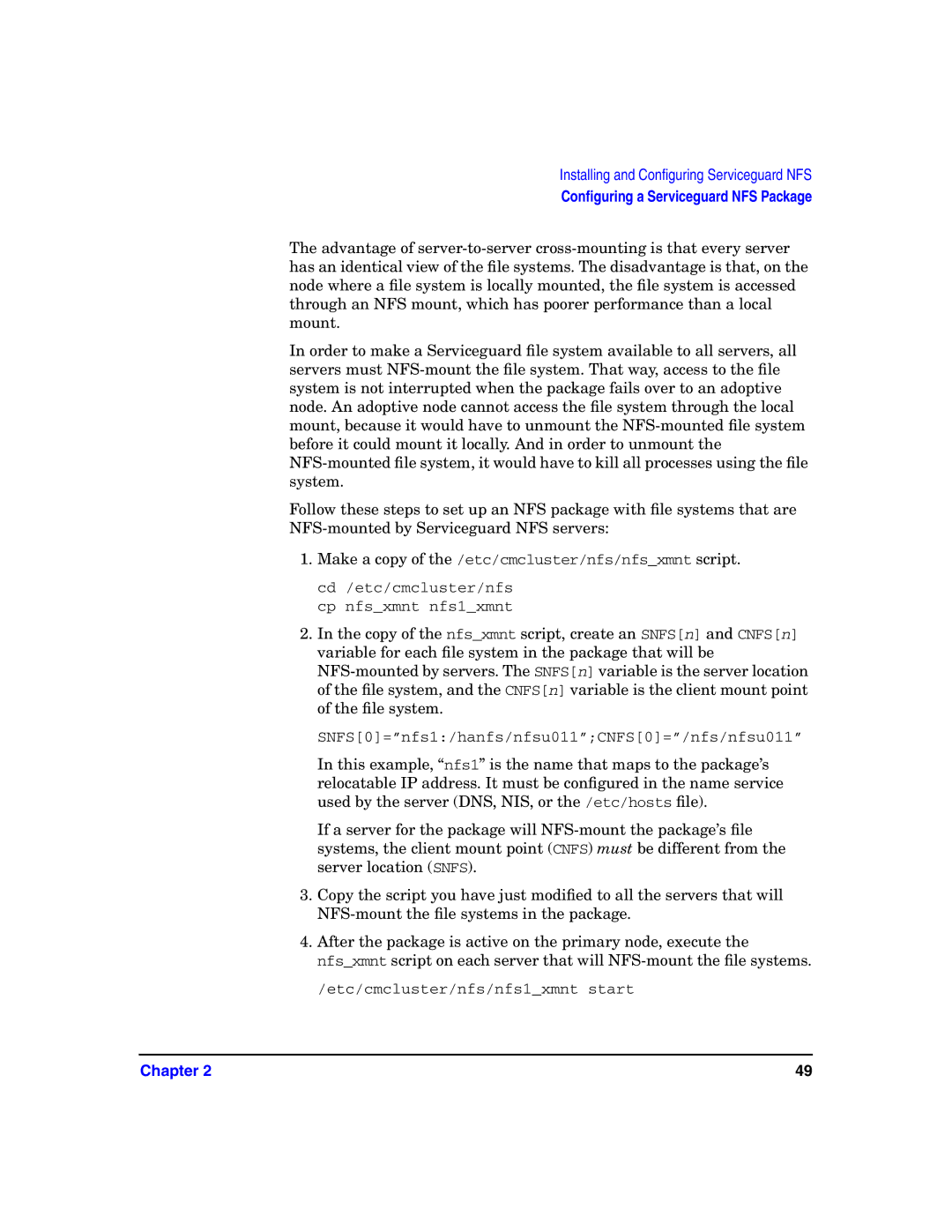Installing and Configuring Serviceguard NFS
Configuring a Serviceguard NFS Package
The advantage of server-to-server cross-mounting is that every server has an identical view of the file systems. The disadvantage is that, on the node where a file system is locally mounted, the file system is accessed through an NFS mount, which has poorer performance than a local mount.
In order to make a Serviceguard file system available to all servers, all servers must NFS-mount the file system. That way, access to the file system is not interrupted when the package fails over to an adoptive node. An adoptive node cannot access the file system through the local mount, because it would have to unmount the NFS-mounted file system before it could mount it locally. And in order to unmount the NFS-mounted file system, it would have to kill all processes using the file system.
Follow these steps to set up an NFS package with file systems that are NFS-mounted by Serviceguard NFS servers:
1.Make a copy of the /etc/cmcluster/nfs/nfs_xmnt script.
cd /etc/cmcluster/nfs cp nfs_xmnt nfs1_xmnt
2.In the copy of the nfs_xmnt script, create an SNFS[n] and CNFS[n] variable for each file system in the package that will be NFS-mounted by servers. The SNFS[n] variable is the server location of the file system, and the CNFS[n] variable is the client mount point of the file system.
SNFS[0]=”nfs1:/hanfs/nfsu011”;CNFS[0]=”/nfs/nfsu011”
In this example, “nfs1” is the name that maps to the package’s relocatable IP address. It must be configured in the name service used by the server (DNS, NIS, or the /etc/hosts file).
If a server for the package will NFS-mount the package’s file systems, the client mount point (CNFS) must be different from the server location (SNFS).
3.Copy the script you have just modified to all the servers that will NFS-mount the file systems in the package.
4.After the package is active on the primary node, execute the
nfs_xmnt script on each server that will NFS-mount the file systems.
/etc/cmcluster/nfs/nfs1_xmnt start
